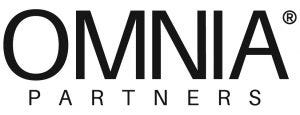June 9, 2021

“Procurement is not usually thought of as ‘sexy,’” says Celeste Frye, co-founder and CEO of Public Works Partners, a planning and consulting firm based in New York. She notes that procurement is a highly visible government function that can help improve opportunities significantly for underserved populations. “Rather than treating procurement as a back-office function, government agencies should market procurement as an area that can bring real change to marginalized communities.”
Frye co-founded Public Works Partners more than a decade ago. At the firm she helps organizations capitalize on existing strengths and engage stakeholders in developing workable strategies that are sustainable over time. Her core client work includes providing performance management training sessions, developing and facilitating leadership forums and strengthening financial management.
Frye points to several positive attributes of a career in public procurement: “It is both a stable long-term career with an in-demand skill set, but also an area where there is a lot of innovation happening with new ideas for equity as well as systems and technology.” She notes that procurement and related professions and disciplines can often be on the cutting edge as government programs are established. “Budgeting, financial management and procurement are where new laws and policies ‘hit the road’ and are implemented, so professionals in these areas get the satisfaction of creating real change and seeing quantifiable outcomes of their work.”
Frye says procurement administrators have an opportunity to recruit more professionals from communities of color. “Procurement, at least at the level of purchasing, has long attracted Black professionals, so there is an existing support system for younger professionals of color.”
Using the right words is key, Frye explains. “Using language around innovation, policy and change can be a successful technique to recruit staff from backgrounds in policy, pre-law, accounting and finance, and social services.” She adds that potential job candidates at the high school graduate and associates degree levels may also respond to this type of language. Frye suggests procurement teams should also spotlight the diversity of existing departments and the long-term growth and stability of procurement careers in their recruiting efforts.
She adds that the times are right for policy professionals who are focused on issues of equity. She believes that recent grads and professionals of diverse backgrounds can be recruited to public procurement through an equity lens—where they can use the power of the purse and what a city or county buys to increase equity in a community. “This is especially true for those who are interested in expanding opportunities for minority and women-owned businesses (M/WBEs) and local as well as small businesses.”
Frye says the COVID-19 pandemic has greatly increased the workload for many public procurement teams. She says that even relatively small departments have been tasked with sourcing everything from PPE to medical equipment to staffing on emergency timelines. “We’ve seen staff augmentation contracts as well as non-procurement staff reallocated to work on procurement for months on end.” This reliance on non-procurement personnel during the pandemic, Frye believes, can provide another opportunity for procurement directors to recruit new employees to the field. “Existing public employees have seen the essential nature of procurement work, have gained some critical skills, and possibly have become interested in pursuing procurement as a longer-term career.”
Agencies can benefit by using cooperative contracts, Frye believes. “Through cooperative purchasing agreements, multiple public agencies, or even multiple municipalities, can benefit from aggregated purchasing power at lower prices.” She adds that due to coops’ standardized procurement processes and having a single procurement group manage a cooperative bid process, agencies can save time by reducing the hours spent releasing and reviewing bids.
Those cooperative deals, Frye adds, can be used to assist non-traditional suppliers. “Governments can encourage large suppliers to subcontract portions of their work to small, local, and disadvantaged suppliers. Being a certified woman-owned firm, Public Works Partners has greatly benefited from M/WBE requirements at the local and state levels.” Frye says that through these carve-outs, her firm has been able to contribute its expertise to large-scale contracts that it wouldn’t be able to pursue on its own. “Cooperative purchasing can also benefit local/small/disadvantaged suppliers by leveraging their relationship(s) with one agency or municipality into larger, multi-agency purchases.”
Frye hopes government procurement departments’ staffing and budgets will grow in 2021-2022. “I expect that federal stimulus dollars and investments in infrastructure will bring added money and capacity to procurement departments. In many ways, procurement is the gear that allows governments to advance the projects and initiatives that impact their stakeholders.” Frye urges that some portion of the pandemic recovery funding making its way to state and local coffers now should be earmarked for procurement.
Public Works Partners offers a “Recipe for Metrics Success” tool that can help governments and other organizations measure impact of projects and gauge effective performance management practices.
Michael Keating is senior editor for American City & County. Contact him at [email protected].

.jpg?width=100&auto=webp&quality=80&disable=upscale)
.jpg?width=400&auto=webp&quality=80&disable=upscale)







